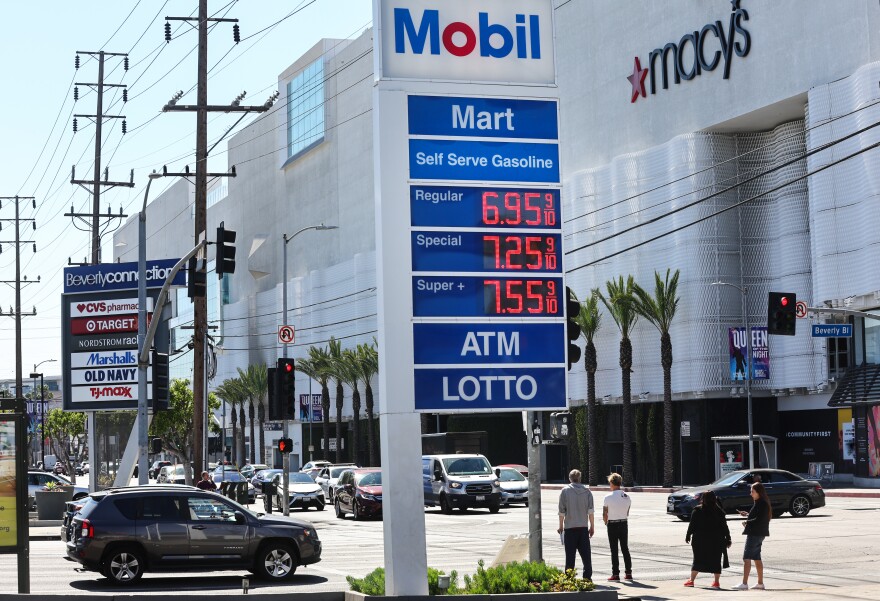Truth matters. Community matters. Your support makes both possible. LAist is one of the few places where news remains independent and free from political and corporate influence. Stand up for truth and for LAist. Make your year-end tax-deductible gift now.
How High Gas Prices And Inflation Hit The Bottom Line, As Demonstrated By One SoCal Business

The fuel crisis of the 1970s didn’t mean much to Craig Paullin; he was still in high school at the time.
But Paullin does remember his dad — who ran a metal manufacturing business — talking about the spike in oil prices and stagflation: “He couldn’t keep ahead of it.”
“Now,” said Paullin, who now runs the business his father started, “I’m living it, going, ‘This is really challenging.’”
With California gas prices soaring to record highs in recent days, some experts are sounding the alarm about the ripple effects: that rising costs for fuel and oil will soon drive up the cost of everything — and at a time when prices for lots of consumer goods are already rising fast.
“These energy prices are going to be baked into core inflation,” said Shon Hiatt, an associate professor at USC’s Marshall School of Business, “meaning all of the services we pay for, any of the products that we buy — those prices are going to increase.”
‘Like A Wildfire’
Paullin’s business illustrates those ripple effects. He owns PSM Industries, a small manufacturer in the Harbor Gateway with around 120 employees locally (and 300 total employees around the country). They make small-ish metal parts, mostly for cars.
In late summer or early fall last year — just after gas prices in California topped the $4-per-gallon mark — Paullin started noticing PSM’s shippers tacking on fuel surcharges.
“As the cost of gas goes up,” Paullin said, “the cost of diesel goes up, and whether it’s by train or by truck, all of those supply chain issues start adding up — and start adding costs to us.”
For a time, Paullin’s company was able to offset these higher costs by selling more products; demand for all kinds of goods his company can produce — from hair-trimmers to knife handles — was higher.
Now, Paullin says his company is fighting to keep ahead of the rising prices. They’re raising prices and looking for ways to save money. His expectations that PSM will turn a profit this year are “eroding quickly … It’s starting to look like a break-even year.”
“It’s like a wildfire,” Paullin said. “The fire started with gas, and now it’s blown across every part of our cost structure.”
‘More Challenging Than COVID’
Paullin says other raw materials — usually around 30% of his company’s total expenses — are more expensive these days as well. In addition to fuel surcharges, packing materials have also made shipping parts more expensive; PSM ships around 35-40% of its products overseas.
Rising energy prices have pulled up the cost of hydrogen gas — an essential part of his company’s manufacturing process, called “sintering.” Paullin’s workers use the gas to heat the metal to super hot temperatures to create the part. Electricity costs are up, too.
“We came out of COVID-19 like, ‘Wow, we survived the most horrible thing that could ever happen,’” said Paullin, who started working for his father at PSM Industries 37 years ago.
But, he added, the rise in energy prices — and their ripple effects — are “actually more challenging to deal with than COVID was for us.”







